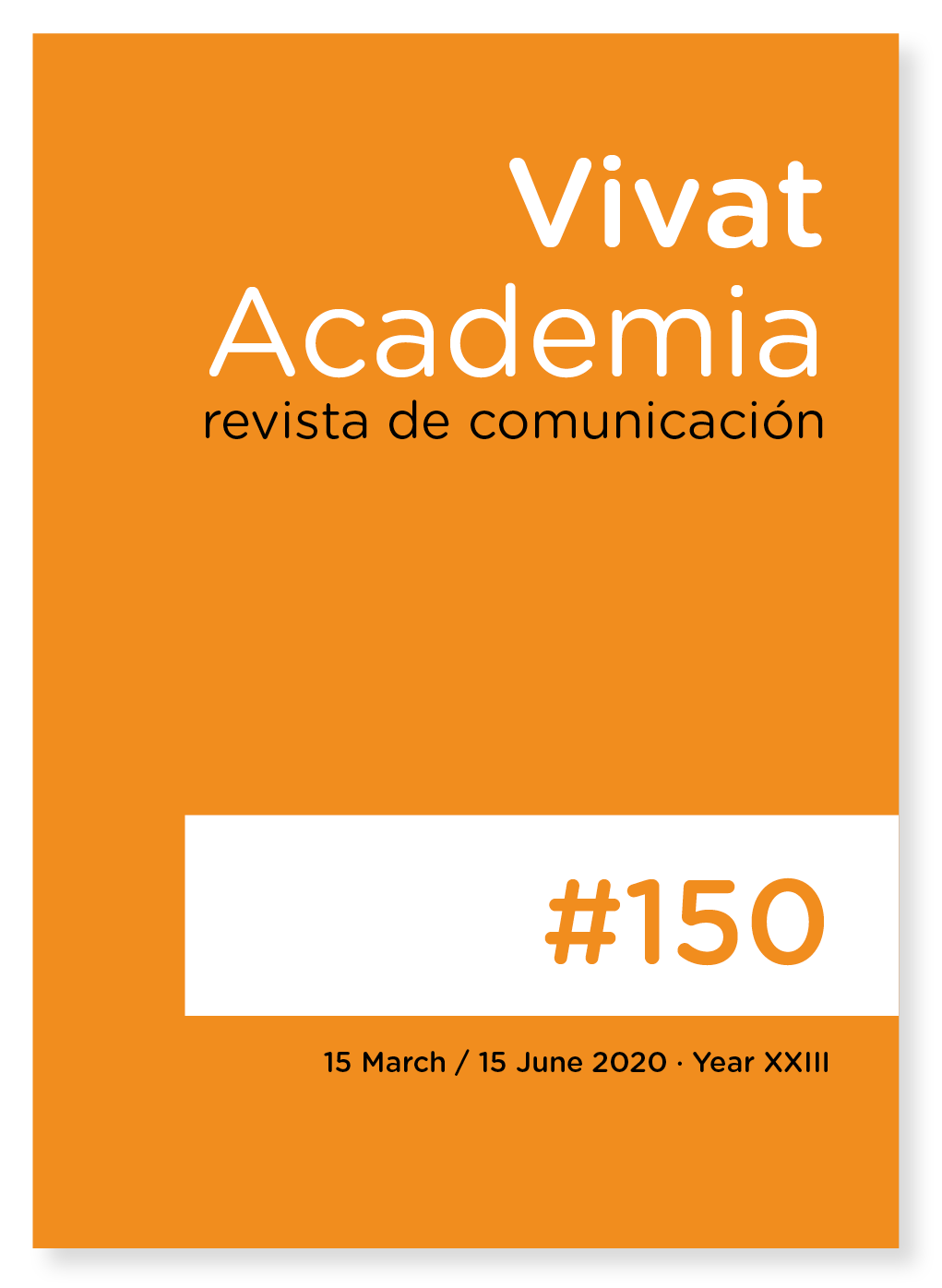Hollywood and the Pentagon. The propagandistic cultural production of the United States Defense Department
Main Article Content
Abstract
The Department of Defense of United States and a sector of Hollywood maintain a long and prosperous productive relationship. The Pentagon helps the production and financing of various films under the condition of being able to make script modifications and influence the representations that the film makes of the United States and its army. This work analyzes the latest films in which the Pentagon has participated since 2015 to specify the possible propagandistic elements common to these production that would serve to classify them as pieces of persuasive or manipulative communication. Through an analysis of discourse applied to the sample, several recurrent narrative and representational strategies have been identified in the different films that, together, make up a clear propaganda strategy that is sustained at the time of the investigation. The cinema influenced by the United States Department of Defense works as a tool for the legitimation and promotion of North American global hegemony trough construction of Manichean representations of the army and political power of United States.
Downloads
Article Details
References
Althusser, L. (2004). La revolución teórica de Marx. México: Siglo XXI.
Aumont, J.; Bergala, A.; Marie, M. y Vernet, M. (2008). Estética del cine: espacio fílmico, montaje, narración, lenguaje. Buenos Aires: Paidós.
Bakir, V.; Herring, E.; Miller, D. & Robinson, P. (2018). Organized Persuasive Communication. Critical Sociology, 00(0), 1-18.
Bakir, V. & McStay, A. (2018). Fake News and the Economy of Emotions: Problems, Causes, Solutions. Digital Journalism, 6(2), 154-175.
Bauman, Z. (2013). La cultura en el mundo de la modernidad líquida. Madrid: FCE.
Bolaño, C., (2013). Industria cultural, información y capitalismo. Barcelona: Gedisa.
Bolaño, C., Páez, A. y Herrera-Jaramillo, M. (2016). Mediación, subsunción y apropiación social. Contribución al diálogo entre estudios culturales, economía política y comunicación. Revista Latinoamericana de Ciencias de la Comunicación, 13(24), 152-165.
Bolin, G., Jordan, P., & Ståhlberg, P. (2016). From Nation Branding to Information Warfare: The Management of Information in the Ukraine-Russia Conflict, en: Pantti, M. (Ed.) Media, Communication Power and the Ukraine Conflict. New York: Peter Lang.
Bustamante, E. (2003). Hacia un nuevos sistema mundial de comunicación. Las industrias culturales en la era digital. Barcelona: Gedisa.
Castells, M. (2014). Comunicación y poder. Madrid: Alianza Editorial.
Chomsky, N. y Edward, S. (1988). Los guardianes de la libertad. Barcelona: Crítica.
Domenach, J. (1955). La Propaganda Política. Buenos Aires: EUDEBA.
Eagleton, T. (1995). Ideología. Una introducción. Barcelona: Paidós.
Edwards, V. (1938). Group Leader's Guide to Propaganda. Nueva York: Institute for Propaganda Analysis.
Fairclough, N. & Wodak, R. (1997). Critical discourse analysis, en T. van Dijk, Discourse Studies: A Multidisciplinary Introduction (pp. 258- 284). Londres: Sage.
Follows, S. (2018). Who are the most prolific people working in Hollywood? Recurso en línea en: https://stephenfollows.com/who-are-the-most-prolific-people-working-in-hollywood/
Foucault, M. (1988). Vigilar y castigar. Madrid: Siglo XXI.
Foucault, M.; Ewald, F.; Fontana, A.; Bertani, M. y Pons, H. (2000). Defender la sociedad. 1st ed. Buenos Aires: Fondo de Cultura Económica.
Gramsci, A. (1977). Antología. México: Siglo XXI.
Habermas, J. (1999). La lucha por el reconocimiento en el Estado democrático de derecho, en J. Habermas, La inclusión del otro: estudios de teoría política (pp. 237- 276). Madrid: Paidós.
Hall, J. (2001). Online Journalism: a critical primer. London: Pluto Press.
Horkheimer, M. y Adorno, T. (2001). Dialéctica de la ilustración. Madrid: Editorial Trotta.
Illescas, J. (2015). La dictadura del videoclip. Barcelona: El Viejo Topo.
Khaldarova, I. & Pantti, M. (2016). Fake news: the narrative battle over the Ukranian conflict. Journalism Practice, 10(7), 891-901.
Laswell, H. D. (1927). Propaganda Technique in the World War. Nueva York: Knopf.
Mayr, A. 2008. Language and power: An introduction to institutional discourse. Londres y Nueva York: Continuum.
Nye, J. (2004). Soft Power. New Hampshire: Public Affairs.
Pizarroso, A. (1993). Historia de la Propaganda, Notas para un Estudio de la Propaganda Política y de Guerra. Madrid: EUDEMA.
Sánchez, E. (2018). El Soft Power en las Guerras de Información, Instituto Español de Estudios Estratégicos.
Stanley, J. (2016). Precis of How Propaganda Works. THEORIA, 31(3), 287-294. doi: https://doi.org/10.1387/theoria.16512
van Dijk, T. (1999). El análisis crítico del discurso. Barcelona: Anthropos.
van Dijk, T. (2016). Análisis crítico del discurso. Revista austral de ciencias sociales. 30, 203-222.
Villarreal, H. (2002). Leni Riefenstahl y el cine de propaganda. Razón y Palabra, 27 Octubre-Septiembre.
Weisman, A. (2014). One Man In The Department Of Defense Controls All Of Hollywood's Access To The Military. Business Insider. Recurso online en https://www.businessinsider.com/phil-strub-controls-hollywoods-military-access-2014-3?IR=T
Zallo, R. (2016). Tendencias en comunicación. Cultura digital y poder. Barcelona: Gedisa.





